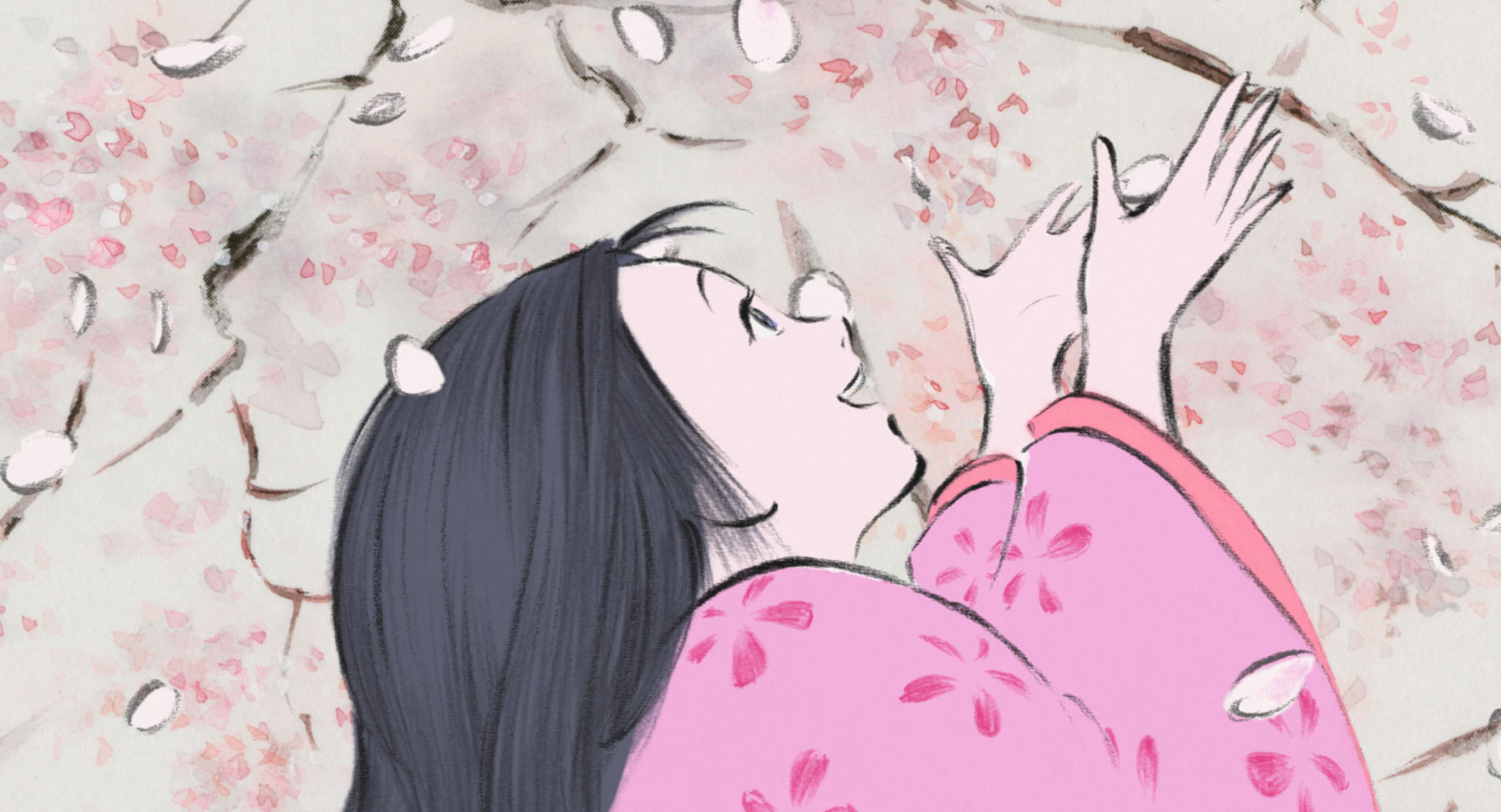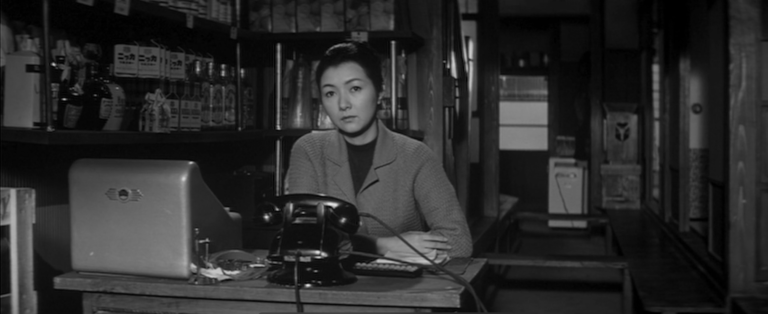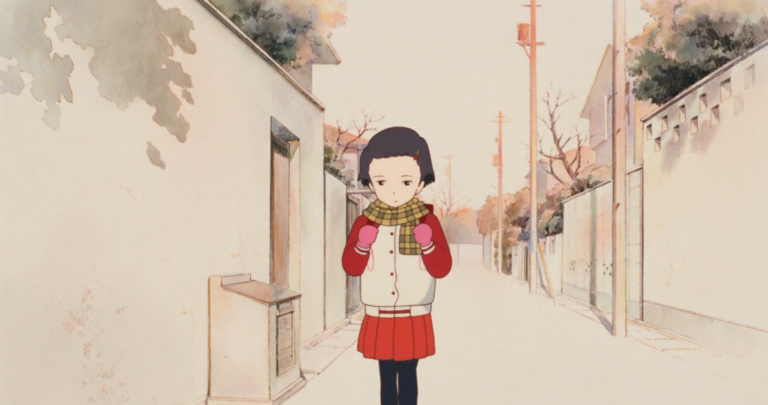Isao Takahata, fondly called Paku-san in Studio Ghibli’s corridors, being the perfectionist that he is, has made such a film that it has taken me this long to get to even populate my outline recollecting it. While doing so, there was one striking quality of his work that kept calling my attention to it. Childhood is the tenderest of all ages and the stories we first hear are incredibly important to how we perceive all stories we hear after that. In that sense, the paradigm becomes a thin layer that exists above all films and guides our thoughts on thematic expressions in each subject. Since time and memory make it increasingly impossible to access those hazy recollections with each passing day, I’m stuttering for words here as to how Paku-san brought this raw effervescence of childhood and mounted it onto the celluloid canvas. I can only look at it two ways – the imagery and the narrative.
The imagery, firstly. Usually, the image that sticks with Studio Ghibli is of high refinement – the images are extremely polished, and the characters are concretely drawn. The faces and the outlines of buildings and landscapes follow precision and conciseness. Given Ghibli’s stature as an animation house, it has permeated every creator outside of it – be it Satoshi Kon or Makoto Shinkai. The product then is a mode of world-building that has been used to narrate childlike stories with the rigour of adult precision. If then, we are to tell a folktale, one that has been told to thousands by thousands, how do we approach it? Certainly not with rigour since we wish to re-enter that first instance of hearing it. So, out goes the rigidity of precision. Takahata chooses to revert to impulse and first sensations. He believes that whatever is drawn first is the result of a passion unhindered by the perfectionist’s scalp. The result is an uncanny resemblance to how memories, by nature, are – a cloudy image, limpid in bursts but largely unclear; rough lines that don’t tell you where the contours of one’s face begin or end. Choosing this way to animate then grants you access to that dominion of memory.
Once inside, how do you shape the narrative? Takahata didn’t want to rehash the original tale of the bamboo cutter. He felt that in the original tale Kaguya was too removed from the hearer and that her decisions were largely cloaked. It unfurled intending to edify one on the principles of life rather than to illuminate the experience behind them. So he decided to fill Kaguya with more nuance to be more earth-like than celestial. She’s born in a pastoral paradise and is shipped into a grandiose cage of wealth. She feels loss and suffering, she yearns, and she learns to accept. Kaguya’s no longer the recalcitrant girl that arrived from the countryside, she’s a woman who has made terms with the conditional happiness of a palace. Spurning every approach, she’s left appalled by an objectionable desire for her by the Emperor – so much so that she accidentally calls to the moon to take her back. In the folktale, this is not the case – she corresponds with the Emperor but is secretly aware that her preordained time on earth is nearing an end. By giving Kaguya the liberty of volition in his version, he renders her final words more impactful – “This world is not unclean. There’s joy and there’s grief. All who live here feel them in all their different shades”. She has come to that conclusion herself and though she found blind desire objectionable, she still appreciates that we are able to feel so much. The mere capacity to feel is a gift that the moon beings don’t possess. It’s such a universally important lesson that to even have the ability to suffer is what makes the palliative of joy cherished. Her mellowing eyes show that had she had the chance to refuse her fate, she would. By subverting the notion that we must learn to defeat suffering or pursue happiness, Takahata takes us back into that thin layer with which we see the world to say that we must learn to respect both states of being.
There’s a reason why I feel that this certitude is far better delivered in a tale such as this as opposed to realization through reform. I do have to clarify that I don’t wish to say that other forms of expressing this certitude are wrong. There have been many interpretations, religious and literary, that stand distanced from the interpretation of Takahata, which is more Eastern. In my mind, the most notable is Raskolnikov’s tale in Crime and Punishment. He feels contempt for the world around him and his circumstances. He suffers by bearing his contempt. It is only through Sonya that he realizes that he must accept it and not rebel against it. Dostoevsky’s indication is clear – he points to the Christian belief of suffering as a necessary cycle to attain God’s kingdom. I’ve found that interpretation beautiful, but not personally resonating. I find more comfort with the contrasting view that places suffering far from being a necessity to attain something, rather appreciate it as yet another capacity for the bodily vessels we inhabit. By re-entering that supple state of life and engraining suffering as vital to our existence, Takahata addresses my current beliefs that I regret not possessing a lot earlier. Though I can’t run the clock backward, Princess Kaguya serves to fill that gap by being as akin as possible to how I might have imagined a tale as a child.
There’s a reason why I feel that a preponderance of films is not necessarily good for a director, but Takahata’s career illustrates why. It might feel more ego-inflationary to boast of having directed and created more films, but you’d substantially be giving less to your audience. Some have tried and succeeded in preponderance – Fassbinder made nearly 44 television and full features in 15 years. The ones that we remember today are Ali, Marriage of Maria Braun, and Berlin Alexanderplatz amongst a few others. As appealing as it might be, the idea of being able to deliver surreal experiences with little to no time is rooted in impracticality. Directors too are bound to the exigencies of the human body. Some might say being a perfectionist compromises realization, and I’d largely agree. But trying to be a perfectionist is much better than categorically rejecting it. Take Takahata and you’d be able to see what I mean by it. He put Ghibli on the map with Grave of the Fireflies and 3 years after, followed it up with Only Yesterday, Pom Poko, and My Neighbors The Yamadas. Each film was screened 3 years after its predecessor and then Takahata hit the brakes. He devoted all his time to finding his crew and being meticulous with Kaguya’s specifics. As the twilight of his career downed the curtains, his greatest gifts were his first and last film. The middle children became fringe, though not through faults of their own, but purely because of how fastidious Takahata was with the first and the last. When asked if he’d make another after Princess Kaguya, he said that though mentally willing, his scrupulousness won’t allow him that luxury. Rightly so, because the qualities of your sensibilities take flight only when a year or two begets half the storyboard. It shows that you’ve belaboured with your wits to either include or exclude certain moments.
I shall return to Takahata’s much-loved pedantry with Grave of the Fireflies later this month. Until then, I’ll be doing a detour to finish my journeys with Ray, Kurosawa, and Bergman. But for what it is, The Tale of the Princess Kaguya does the rarest of all feats – it turns back the clock, drenches you with cloudy drips of memory, and hands you life’s most valuable lesson – appreciate suffering and grief, else joy would seem as languid as the clouds that cloak the moon.





